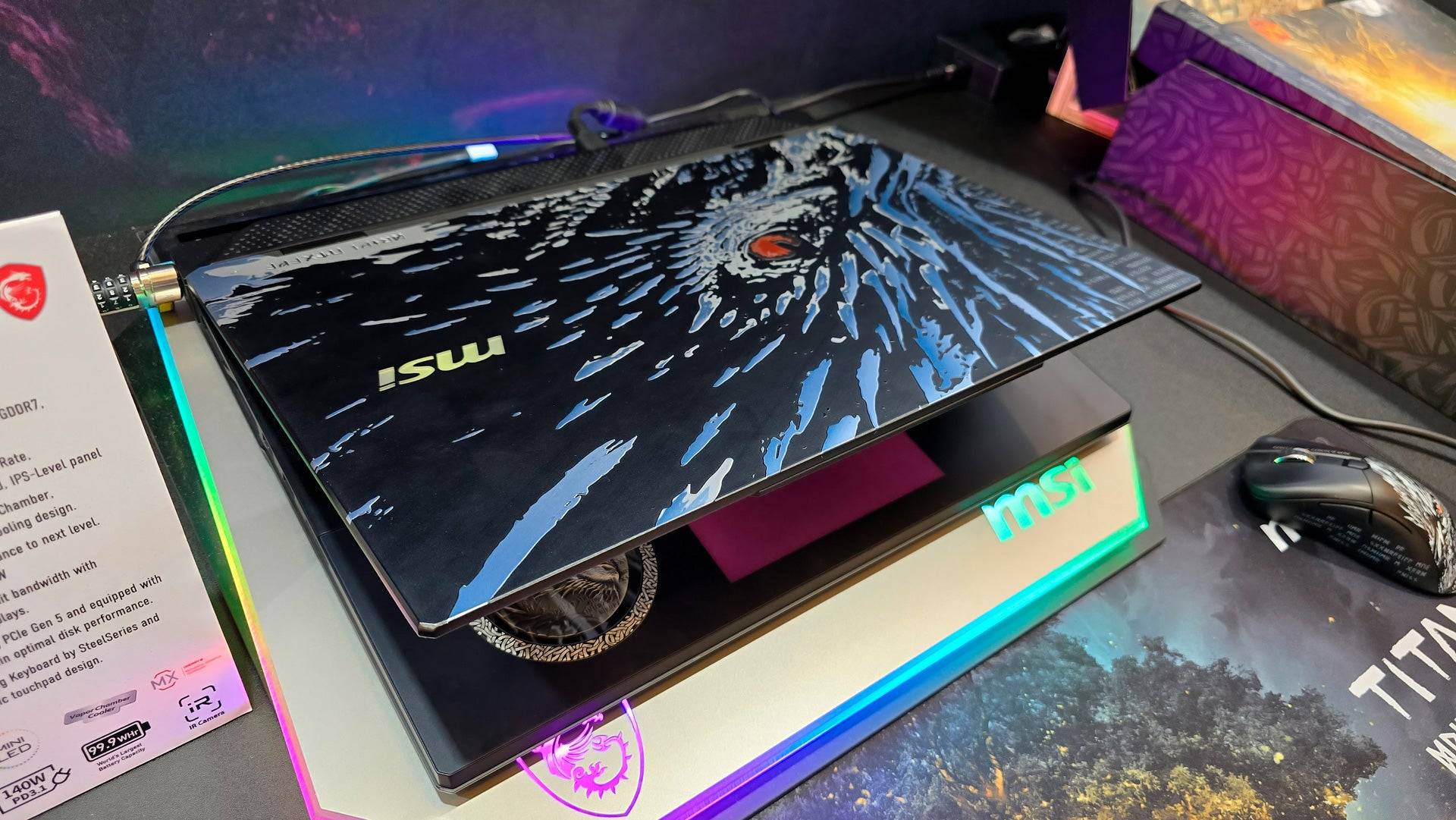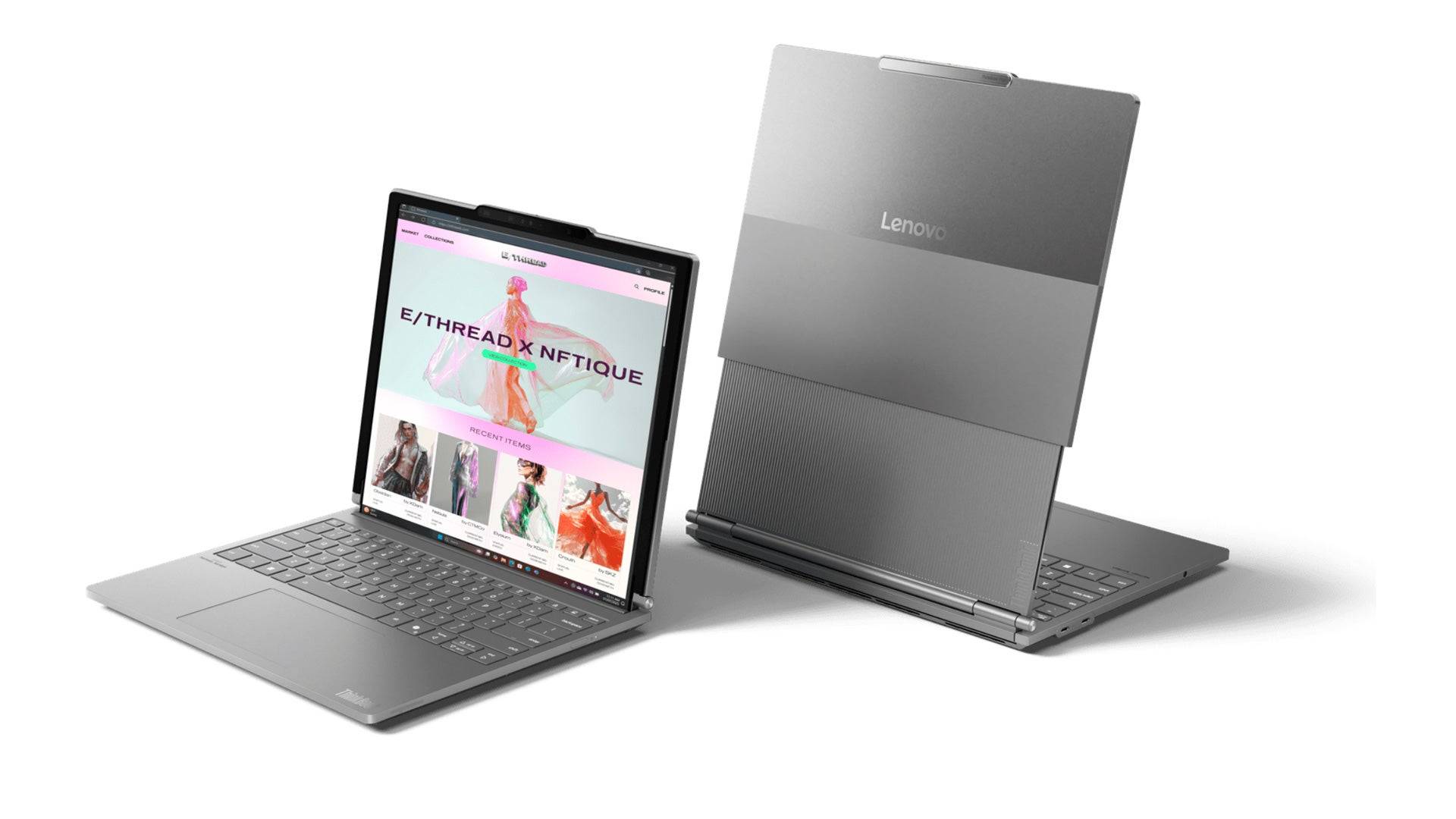CES never disappoints when it comes to showcasing the latest in laptops, and this year was no different. I thoroughly explored the show floor, as well as packed suites and showrooms, to bring you the most significant trends in gaming laptops for this year. Here are the key themes that defined the gaming laptop landscape at CES.
A Huge Diversity of Designs
Gaming laptops have always offered a variety of styles, but this year's showcase felt particularly expansive. Brands like Gigabyte and MSI are increasingly merging productivity with gaming aesthetics, pushing the boundaries of what high-end gaming laptops can offer beyond just raw power. This year, you can expect a broader spectrum of designs. From sleek and professional laptops like the Gigabyte Aero series, which would seamlessly blend into a business environment, to bold, statement-making devices like the MSI Titan 18 HX AI Dragonforged Edition with its striking graphics on the lid, the range is impressive.
RGB lighting remains a staple, with innovations such as wrap-around lighting rings, illuminated mechanical keyboards, and even trackpad lights. The Asus ROG Strix Scar series stood out with its AniME Dot Matrix LED display on the lid, capable of showing text and animations through a series of white LEDs. While there's no radical reinvention, look forward to a mix of novel features alongside the traditional spectrum of large, heavy machines and slim, lightweight options with diverse hardware configurations.

AI Assistants are Coming
Last year, AI integration in laptops was more of a promise than a reality. This year, multiple vendors showcased AI Assistants designed to enhance user control over their PCs without the need for manual software adjustments. An MSI demo illustrated this by allowing a user to verbally describe the type of game they wanted to play, prompting the AI to automatically adjust the laptop's performance settings to match the game's intensity.
However, I remain skeptical about the real-world benefits of these AI systems. While they're intended to work offline, it's unclear whether they offer significant time savings over manual adjustments. We'll need to see these features in action to truly assess their value.
Mini-LED, Rollable Displays and Other Novelties
Mini-LED technology is finally making a significant impact in the gaming laptop market. Brands like Asus, MSI, and Gigabyte displayed Mini-LED laptops with top-tier specs and pricing. These models feature over 1,100 local dimming zones to minimize blooming and enhance contrast, along with exceptional brightness and vibrant colors. While OLED still leads in contrast, Mini-LED's advantages in preventing burn-in and maintaining high brightness make it an exciting prospect for future models.
There were also intriguing novelties on display. The ASUS ROG Flow X13, returning after a hiatus, now supports an eGPU via USB4, connecting to a new eGPU unit that can include up to an RTX 5090. Asus also showcased its Zenbook Duo, a dual-screen productivity laptop, but Lenovo stole the show with the Lenovo ThinkBook Plus Gen 6 Rollable. This isn't a gaming laptop, but its rollable OLED display, which extends from a 14-inch screen to add an additional 2.7 inches, represents a fascinating innovation. As a first-generation product, durability concerns exist, but it's a genuine product available for purchase and likely to improve as the technology evolves.

Ultrabooks Continue to Rise, Even for Gaming
Ultrabooks are increasingly prevalent, even within gaming line-ups. Major manufacturers now offer thin, light, and premium yet minimalist gaming laptops, such as Gigabyte's revamped Aero series. These Ultrabooks strike a balance between gaming performance and portability, making them ideal for users who prioritize productivity on the go but still want to enjoy gaming.
My review of the Asus TUF Gaming A14 last year highlighted how these machines can incorporate dedicated graphics cards without compromising their portability. Moreover, with the latest AMD and Intel processors, integrated graphics and features like AMD FidelityFX Super Resolution and Intel XeSS enable even demanding games to be playable on these systems. For casual gamers, this might be all that's needed, raising questions about the future necessity of lower-end graphics cards like the RTX 4050M.
Cloud gaming services like Xbox Cloud Gaming and Nvidia GeForce Now further enhance the appeal of these ultrabooks, allowing users to enjoy high-quality gaming experiences without the need for dedicated gaming hardware.

The CES showcased numerous exciting developments in gaming laptops, and we'll continue to cover these trends throughout the year. What caught your attention? Share your thoughts in the comments below!















